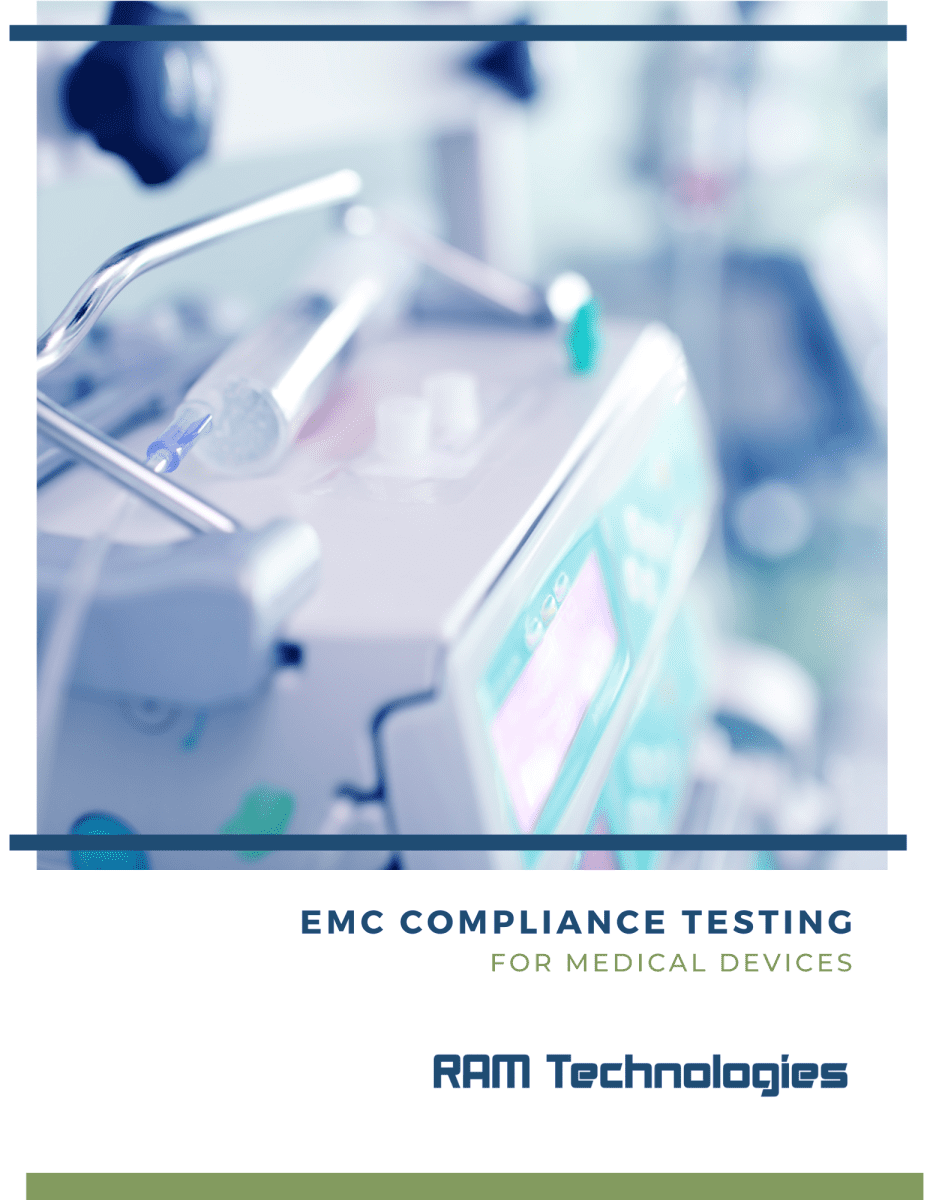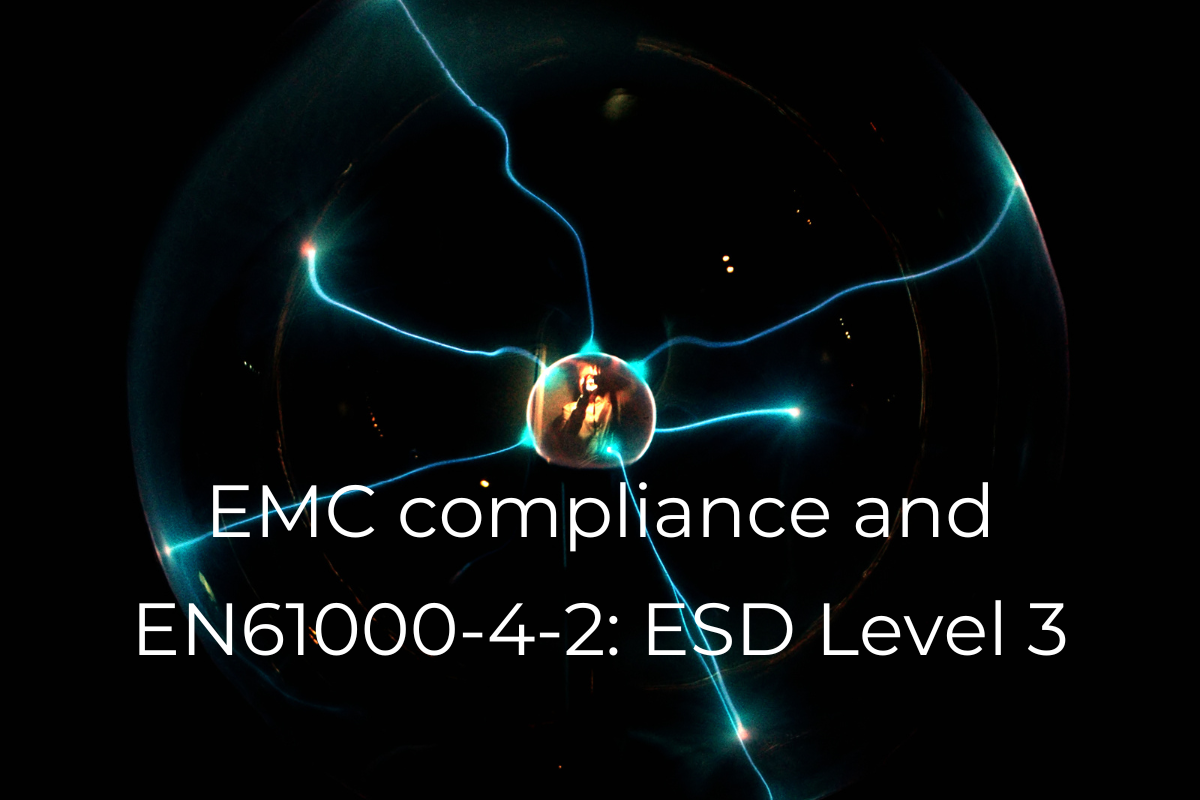Electromagnetic compatibility (EMC) testing standards play an important role in getting many medical devices to market. By passing the tests, manufacturers confirm that their devices don’t emit significant amounts of electromagnetic interference, and that they will continue to work properly when around other electromagnetic phenomena.
This blog will cover the EMC test standard of EN 61000-4-2: ESD Level 3 (also known as IEC 61000-4-2).
Summary of EN 61000-4-2: Electrostatic Discharge (ESD) Level 3
Electronic devices must be able to resist a certain amount of electrostatic discharge (ESD), which can occur when two objects with different electrical charges come into contact. This can be as simple as a person touching a metal object in dry winter conditions and getting a shock.
The ESD level 3 requirement specifies that equipment must be able to withstand an ESD discharge of ±8 kV in the air and ±6 kV via contact. If not planned for, ESD discharge from built-up electricity can cause problems such as screen damage, communication failures, and more.
Testing for EN 61000-4-2
IEC 61000-4-2 details how electrical or electronic equipment should be able to perform when exposed to electrostatic discharge (ESD). This also includes static electricity that is discharged from people to objects close to the equipment being tested.
Testing may be covered in one of two ways: Type conformity at a laboratory or testing where the equipment under test (EUT) is installed. The first method of testing is most commonly used and the only way to demonstrate conformity.
During the ESD test, the temperature of the room needs to be between 15°C and 35°C, the relative humidity should be between 30% and 60%, and the atmospheric pressure should be from 86kPa (860mBar) to 106kPa (1060mBar).
The setup will include elements that apply discharges to the EUT in direct and indirect ways. Contact discharge will be made to parts of the device surface that are conductive, as well as a coupling plane in the form of a metal sheet that is meant to simulate ESD events that can happen in the real world. The test also includes air discharges made to insulating surfaces of the EUT, meant to simulate someone touching the device.
If the EUT passes the ESD test, it means that it is likely to be able to withstand the ESD events that it may encounter in normal use. This is important because ESD can cause serious damage to electronic devices, such as corrupting data, causing system crashes, and even destroying the device completely. More details on testing can be found on the Academy of EMC page.
Test Levels
There are four different test levels for EN 61000-4-2. RAM Technologies’ power supply units (PSUs) are compliant with level 3, which has the requirement to handle ESD discharge of ±8 kV in the air and ±6 kV via contact. The standard also specifies how to choose the immunity test level based on relative humidity and materials.
What to know about EMC Compliance and PSUSs for Your Medical Device
EMC standards apply to whole systems and not individual components of a medical device. This means that manufacturers need to ensure all the parts they need will also be compliant and not impede their approval. RAM Technologies carries PC-based power supply units that meet standards for EN 61000-3-2 Level 3 and other elements of EMC compliance.
You can find information on our downloadable data sheets, available on each power supply page. For any specific questions, send us a message.
RAM Technologies’ power supplies are 60601-1 3.2 certified and meet 60601-1-2 EMC standards. When you’re designing your medical device and need help with a PSU, contact us for details.

Download the EMC Summary
The road to putting your medical device on the market includes many steps, including passing all necessary electromagnetic compatibility (EMC) testing. These tests play an essential role in ensuring your device doesn’t emit a significant amount of electromagnetic interference, which could be via conducted or radiated emissions. Download our guide to EMC compliance to learn more about what medical device manufacturers should consider.
More Resources:
Downloadable Guide to IEC 60601-1
EMC Compliance and EN 61000-4-3: RF Susceptibility
EMC Compliance and EN61000-4-4: EFT Level 3
EMC Compliance and EN 61000-4-5: Surge
